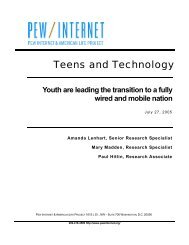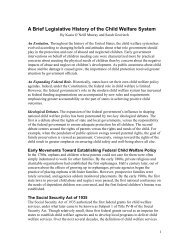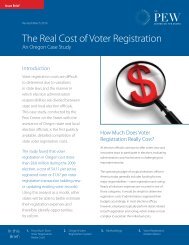Abiotic arising from non-living organisms. Adjuvant a - The Pew ...
Abiotic arising from non-living organisms. Adjuvant a - The Pew ...
Abiotic arising from non-living organisms. Adjuvant a - The Pew ...
You also want an ePaper? Increase the reach of your titles
YUMPU automatically turns print PDFs into web optimized ePapers that Google loves.
Gene knockout strategy<br />
Gene product<br />
Gene stacking<br />
Genetic drift<br />
Genome<br />
Genomics<br />
Genotype<br />
Germplasm<br />
Gill irrigation<br />
Glycoalkaloids<br />
Glycolysis<br />
Heat-labile<br />
Heterozygous<br />
Homology<br />
Hybrid<br />
Immunoglobulin (Ig)<br />
Immunoglobulin E (Ig<br />
E)<br />
In utero<br />
In vitro<br />
In vivo<br />
Intellectual property<br />
(IP)<br />
Introgression<br />
Irradiation<br />
Leptokurtic<br />
Lipogenesis<br />
Mass spectrometry<br />
Mating system<br />
Meiosis<br />
Methanogenesis<br />
Mitosis<br />
Mutagenesis<br />
Mycorrhizae<br />
Ontogenetic delay<br />
Ontogeny<br />
Operons<br />
an approach used to determine the function of a specific gene by inactivating<br />
(knocking out) that gene in the intact organism and studying the consequences of<br />
this modification.<br />
proteins resulting <strong>from</strong> the transcription of a gene.<br />
the process of inserting two or more different genes into an organism.<br />
the random change in gene frequencies in populations.<br />
the master blueprint for the total set of an organism’s genes.<br />
the study of genomes.<br />
the hereditary constitution of an organism.<br />
hereditary material.<br />
oxygen transfer <strong>from</strong> water to the blood in fish.<br />
toxic secondary organic compounds found in the potato family.<br />
the process by which sugars are converted to acids.<br />
easily destroyed by heat.<br />
having two different genes at a given location on the chromosome map.<br />
structural similarity due to descent <strong>from</strong> a common ancestor or form.<br />
the offspring produced by breeding plants or animals of different varieties,<br />
species or races.<br />
see antibody.<br />
an antibody produced by an allergen which has specific structural and biological<br />
properties.<br />
within the uterus.<br />
outside the <strong>living</strong> body; in a laboratory or test tube.<br />
within the <strong>living</strong> body.<br />
the legal rights associated with inventions, artistic expressions and other products<br />
of the imagination (e.g. patent, copyright and trade-mark law.)<br />
movement of a new gene into a population.<br />
a process involving the use of low levels of radiation to reduce the presence of<br />
disease causing agents, for example during the processing of food products.<br />
a normal statistical curve that is quite steep or sharp.<br />
the conversion of carbohydrates and organic acids to fat.<br />
a technique for determining the composition of a molecule and its fragments.<br />
the mode of transmission of genes <strong>from</strong> one generation to the next through sexual<br />
reproduction.<br />
cell division by which eggs and sperm are produced.<br />
the process of creating methane gas during metabolism.<br />
the process by which the equal partitioning of replicated chromosomes into two<br />
identical groups takes place.<br />
the process of changing the DNA base sequence at a specific site.<br />
a group of fungi that grow in close association with plant roots.<br />
a delay in the course of growth and development to maturity.<br />
the course of growth and development of an individual to maturity.<br />
gene clusters under common control in bacteria.
















